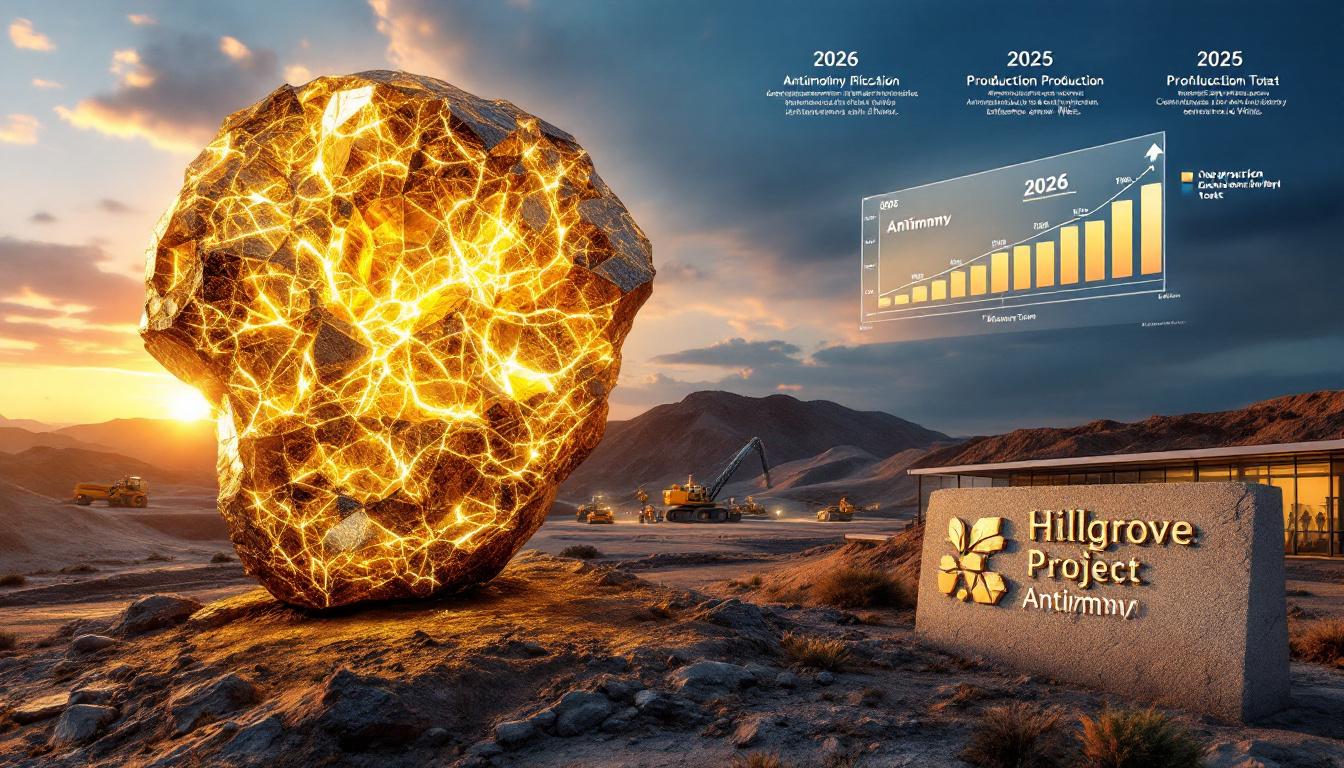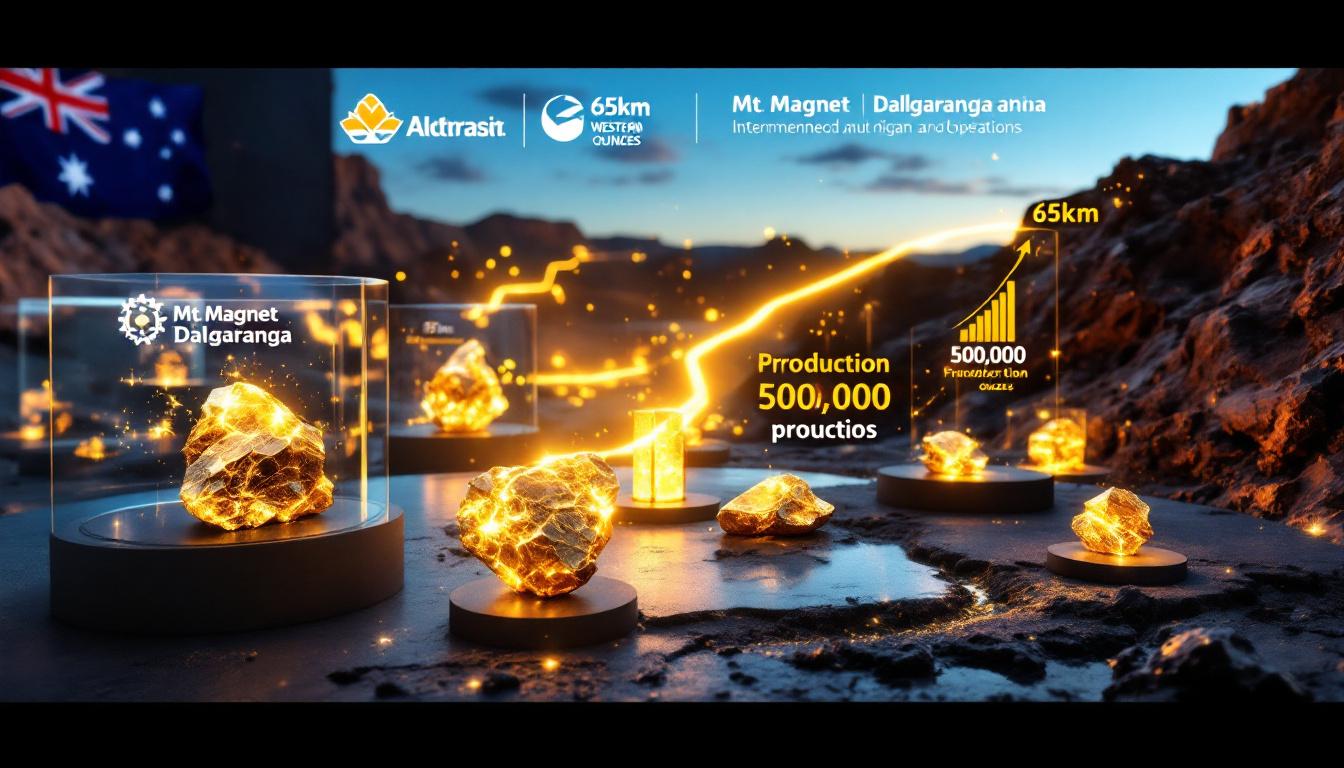What is Rubidium and Why is it Suddenly Important?
Rubidium (Rb), atomic number 37, is a soft, silvery-white alkali metal that has largely remained in the shadow of its more famous periodic table neighbors. Despite being relatively abundant in Earth's crust—comparable to zinc and more common than copper—rubidium has historically received little attention in critical minerals energy transition discussions.
However, this overlooked element is now gaining significant traction in mineral exploration circles. In 2025, rubidium has begun appearing in exploration news releases with increasing frequency, signaling a potential shift in the strategic minerals landscape.
The Overlooked Alkali Metal
Rubidium belongs to the alkali metal group, sharing chemical properties with potassium and cesium. Its high reactivity (it ignites spontaneously when exposed to air) and silvery appearance make it both fascinating and challenging to work with. What makes rubidium particularly interesting is its abundance—approximately 30 times more common than cesium in the Earth's crust.
As Christopher Ecclestone and Sergei Shulin of Hallgarten + Company note: "Every shovel dug for lithium today is effectively a rubidium exploration program," highlighting the element's close association with lithium-bearing minerals.
Emerging Market Interest
The sudden surge in rubidium exploration announcements points to growing recognition of its strategic value. Companies like Quantum Critical Metals Corp. in Quebec have reported high-grade assays of 701 g/t rubidium, while Nevada-based Surge Battery Metals has identified "significant amounts" at its lithium project.
This interest isn't merely speculative. Quebec's James Bay region routinely shows 0.5-1% rubidium content in lithium-bearing minerals, while China's Yichun district contains lepidolite zones with up to 3.5% Rb₂O. These concentrations, when considered at scale, represent substantial potential resources of an increasingly strategic metal.
How Could Rubidium Disrupt a Chinese Monopoly?
The strategic importance of rubidium centers on its potential to challenge China's monopoly in the cesium market—a little-known but critically important situation in the specialty minerals sector.
The Current Cesium Formate Monopoly
Sinomine Resource Group, a Chinese company, effectively controls the global supply of cesium formate—a critical drilling fluid used in high-pressure, high-temperature (HPHT) oil and gas operations. This control comes through Sinomine's ownership of the pollucite-rich Tanco mine in Manitoba, Canada.
As Ecclestone points out, "Sinomine's marketing literature is explicit: it is 'the only producer and supplier of cesium formate in the world.'" This monopoly allows Sinomine to set prices at will, with Ecclestone noting that "Cesium brine sells for whatever Sinomine says it sells for."
The cesium formate market generates approximately $150 million in annual sales, making it a lucrative monopoly worth protecting.
Strategic Vulnerability
This monopoly creates significant vulnerabilities for Western nations and companies reliant on cesium formate for drilling operations:
- Supply disruptions have already occurred due to labor disputes and environmental events like Manitoba wildfires
- Zimbabwe's Bikita mine, historically a secondary source, now operates under export restrictions
- No alternative suppliers exist to counter Sinomine's market dominance
- Critical oil and gas drilling operations depend on reliable access to these specialty brines
The Rubidium Alternative
Industry analysts suggest that rubidium formate could serve as a chemically similar alternative to cesium formate in drilling applications. This substitution could potentially break Sinomine's market dominance and create a new demand of several hundred tonnes annually for rubidium—far exceeding the current U.S. market of just 1-2 tonnes per year.
As Hallgarten + Company researchers note, "If Rb can elbow its way into contention, Sinomine can be ousted from its dominant position" in the specialty drilling fluids market.
What Makes Rubidium a Viable Substitute for Cesium?
The viability of rubidium as a cesium substitute rests on both chemical similarities and practical advantages in abundance and accessibility.
Chemical Similarities
Rubidium and cesium share key properties that make substitution possible:
- Both elements possess large ionic radii
- Both have a single valence electron (Rb⁺, Cs⁺) that confers high solubility in formate chemistry
- Both are highly reactive alkali metals (igniting on contact with water)
- Both can form dense brines suitable for high-pressure applications
These shared characteristics suggest that rubidium formate could potentially match cesium formate's performance in demanding drilling conditions.
Abundance Advantage
The critical difference between rubidium and cesium lies in their relative availability:
- Rubidium is approximately 30 times more abundant than cesium in the Earth's crust
- While cesium is confined almost exclusively to rare pollucite deposits, rubidium occurs as a trace element in various minerals, particularly lithium micas
- Rubidium's wider geological distribution makes it less susceptible to monopolistic control
Processing Opportunity
Rubidium's association with lithium minerals creates a fortuitous opportunity amid the global battery metals boom:
- Every lithium exploration project inadvertently becomes a rubidium exploration program
- Lepidolite zones in China's Yichun district contain up to 3.5% Rb₂O
- Quebec's James Bay region routinely shows 0.5-1% rubidium content
- Existing lithium processing circuits can potentially recover rubidium as a by-product at marginal additional cost
This synergy with lithium industry innovations means that rubidium recovery could benefit from the billions already being invested in lithium extraction and processing infrastructure worldwide.
Where is Rubidium Already Being Used?
While rubidium's potential as a cesium formate substitute represents a significant new market opportunity, the element already has established applications that demonstrate its technical viability.
Atomic Clock Applications
Rubidium already serves as a substitute for cesium in atomic clock technology:
- Commercial rubidium frequency standards are widely used in telecommunications base stations and GPS disciplined oscillators
- While slightly less accurate than cesium standards, rubidium clocks offer an order-of-magnitude cost advantage
- These devices achieve accuracy to one part in 10⁹—sufficient for most commercial applications
As Ecclestone notes, "Telecom operators can live with [rubidium clock] tolerance… so can drillers," suggesting that the precision trade-off is acceptable in both timing and drilling applications.
The Substitution Principle
This established substitution pattern in timing applications supports the argument that rubidium could similarly replace cesium in drilling fluids, where the primary concern is hydrostatic pressure rather than picosecond-level timing precision.
The performance requirements for drilling fluids center on density, stability, and environmental compatibility—areas where rubidium formate could potentially match cesium formate's performance at a more competitive price point due to greater abundance.
What Challenges Face Rubidium Market Development?
Despite its promising potential, rubidium faces several significant hurdles before it can effectively challenge cesium's dominance in specialty applications.
Pricing Transparency Issues
A significant obstacle to rubidium market growth is the absence of transparent pricing:
- No public market or quoted price exists for rubidium
- Current transactions occur through bespoke contracts measured in kilograms
- The lack of price discovery mechanisms allows monopolistic practices to flourish in related markets
As Hallgarten + Company researchers observe, "All attempts to elucidate Rb costs are elusive," making it difficult for potential market entrants to assess economic viability.
Technical Validation Requirements
Before widespread adoption, rubidium formate must demonstrate:
- Comparable performance to cesium formate in HPHT drilling conditions
- Cost-effective production at commercial scale
- Compatibility with existing drilling equipment and procedures
The technical validation process requires significant investment in testing and certification, creating a chicken-and-egg problem: without market demand, investment is limited; without investment, market development stalls.
Supply Chain Development
Creating a viable rubidium supply chain requires:
- Identification of economically viable recovery methods from lithium processing
- Development of specialty chemical manufacturing capacity
- Establishment of quality standards and specifications
- Solutions for the hazardous material handling challenges posed by rubidium's reactivity
Processing methods like acid-sulfate leaching, gypsum roasting, and ion-exchange chromatography show promise, but their economic viability at scale remains unproven.
Why Does Rubidium Have Geopolitical Significance?
The strategic importance of rubidium extends beyond its commercial applications to broader geopolitical considerations in the ongoing competition for critical mineral resources.
Chinese Control of Critical Resources
The geopolitical dimension of rubidium stems from China's dominance of related resources:
- Beijing controls the Tanco mine through Sinomine
- Chinese influence extends to Zimbabwe's Bikita mine through acquisition
- Domestic Chinese lepidolite operations feed the country's lithium industry, giving processors first access to rubidium by-products
This concentration of control creates strategic vulnerabilities for Western nations, particularly in sectors like energy exploration that depend on specialty minerals.
Western Strategic Mineral Initiatives
Non-Chinese rubidium resources could benefit from Western government support:
- Australia's Pilgangoora, Brazil's Grota do Cirilo, and Canada's Case Lake represent potential "friend-shoring" opportunities
- The U.S. Inflation Reduction Act provides billions in funding for critical minerals from allied nations
- Pentagon precedents exist for supporting strategic minerals like beryllium and gallium
As Ecclestone notes, "Rubidium's best credential may be that Washington hasn't noticed it yet," suggesting that the element could attract policy support once its strategic importance becomes more widely recognized.
How Can Investors Evaluate Rubidium Opportunities?
For investors interested in rubidium's potential, careful due diligence is essential to separate legitimate opportunities from speculative promotion.
Due Diligence Criteria
Industry analysts recommend specific criteria for evaluating potential rubidium investments:
- Lepidolite resources exceeding 10 million tonnes
- Rb₂O grades above 0.45%
- Sufficient lithium credits to cover operating costs
- Established relationships with specialty chemical buyers
These benchmarks ensure that projects have both the scale and grade to support economically viable rubidium recovery.
Red Flags
Investors should be wary of:
- Companies that mention rubidium in headlines without substantive resources
- Claims not supported by compliant resource estimates (NI 43-101/JORC)
- Projects lacking technical feasibility studies for rubidium recovery
As Hallgarten + Company researchers caution, "Companies throwing 'rubidium' into headlines often hold nothing but trace assays," highlighting the risk of promotional exaggeration in the junior mining sector.
Economic Considerations
Viable rubidium projects must demonstrate:
- Competitive production costs relative to cesium alternatives
- Scalable processing technology
- Market acceptance from end-users in the oil and gas sector
The most promising opportunities are likely to emerge from existing lithium operations that can add rubidium recovery circuits to their processing flow, leveraging existing infrastructure and expertise.
What Technical Challenges Must Be Addressed?
The development of a robust rubidium supply chain faces significant technical hurdles related to the element's reactive nature and processing complexity.
Handling Hazards
Rubidium presents significant technical challenges:
- It reacts explosively with oxygen and water
- Transportation regulations treat it more like high explosives than minor metals
- Specialized handling and processing equipment is required
These hazards add complexity and cost to the entire supply chain, from mining through processing to end-use applications.
Processing Routes
Several processing methods show potential for rubidium recovery:
- Acid-sulfate leaching: Effective but energy-intensive
- Gypsum roasting: Compatible with existing lithium circuits
- Ion-exchange chromatography: Offers high purity but at higher cost
Each approach offers different cost profiles and recovery rates, with the optimal method depending on the specific mineral source and desired end-product. As researchers note, "Row processing methods depend on mineral source and end-product," highlighting the need for customized approaches.
What Does the Future Hold for Rubidium Markets?
The potential development path for rubidium markets involves multiple stages of growth and application expansion.
Market Development Scenarios
Analysts project a three-stage market development:
- Initial displacement of 5% of the cesium formate market
- Expansion into specialty glass manufacturing
- Growth into catalyst and medical imaging applications
This progressive market penetration could transform rubidium from a laboratory curiosity to a commercially significant specialty metal.
Supply Chain Evolution
The rubidium supply chain will likely evolve from:
- Initial by-product recovery from existing lithium operations
- Development of dedicated processing circuits
- Eventual direct mining of rubidium-rich resources if demand justifies the investment
This evolutionary path mirrors the development of other specialty metal markets, where initial recovery as by-products gradually gives way to dedicated production as demand grows.
Strategic Implications
The emergence of rubidium as a strategic mineral could:
- Reduce Western vulnerability to Chinese supply control
- Create new value streams for lithium producers
- Establish more competitive pricing in specialty drilling fluids
These outcomes would benefit both mineral producers and end-users, while reducing geopolitical vulnerabilities in critical supply chains.
How Does Rubidium Fit into the Critical Minerals Landscape?
Rubidium's emergence comes amid growing recognition of critical mineral vulnerabilities and efforts to secure diverse supply chains for strategic resources.
Current Recognition
Rubidium has already gained official recognition as a critical mineral by:
- The United States Geological Survey (USGS)
- New Zealand's Critical Minerals List
- Japan's Critical Minerals List
This recognition opens the door to potential policy support and investment incentives targeted at securing supply chains.
Strategic Value Proposition
Rubidium's strategic value derives from:
- Its potential to disrupt an existing rubidium and cesium monopoly
- Relatively abundant geological distribution
- Association with already-developed lithium brine market insights
- Applications in high-value technical niches
The Critical Minerals Institute notes that rubidium's strategic value lies in "disrupting monopolies," highlighting its importance in the broader context of critical mineral security.
Future Policy Implications
As awareness grows, rubidium could become:
- A target for strategic stockpiling
- Eligible for additional government support programs
- Subject to export controls in certain jurisdictions
These policy developments could significantly impact the economics of rubidium recovery and processing, potentially accelerating market development through defense-critical materials strategy initiatives and CRM facility development.
FAQs About Rubidium as a Critical Mineral
What makes rubidium "critical"?
Rubidium qualifies as critical due to its potential to break a Chinese monopoly in specialty drilling fluids, its growing applications in technology, and the concentration of current supply chains under Chinese influence. Its strategic importance is amplified by its applications in sectors like energy exploration and telecommunications infrastructure.
How is rubidium currently sourced?
Most commercial rubidium is recovered as a by-product from lithium mining, particularly from lepidolite (lithium mica) processing. It is not currently mined directly as a primary product. The element's close association with lithium means that the booming battery materials sector inadvertently creates opportunities for rubidium recovery.
What are the main uses for rubidium today?
Current applications include atomic clocks for telecommunications, specialty glass manufacturing, and research applications. The potential market for drilling fluids represents a significant growth opportunity that could transform rubidium from a niche laboratory material to a commercially important industrial input.
Is rubidium mining environmentally problematic?
As rubidium would primarily be recovered as a by-product of existing lithium operations, its environmental footprint would be minimal beyond the impacts already associated with lithium production. This "piggyback" approach to recovery represents an efficient use of resources already being extracted.
How does rubidium compare to other critical minerals in strategic importance?
While less prominent than lithium or rare earth elements, rubidium represents an important niche in breaking strategic monopolies and diversifying supply chains for high-value applications. Its strategic significance lies not in volume but in its potential to disrupt a concentrated market with geopolitical implications.
Ready to Gain an Edge in Critical Mineral Investing?
Don't miss out on the next rubidium or critical minerals opportunity—Discovery Alert's proprietary Discovery IQ model delivers real-time notifications on significant ASX mineral discoveries, providing you with actionable investment insights before the broader market moves. Visit our discoveries page to learn how major mineral discoveries can generate substantial returns for prepared investors.




